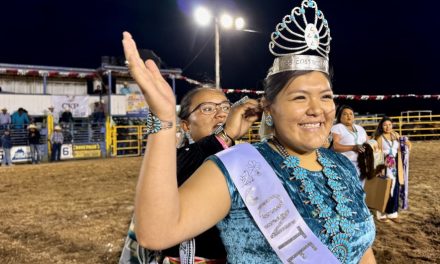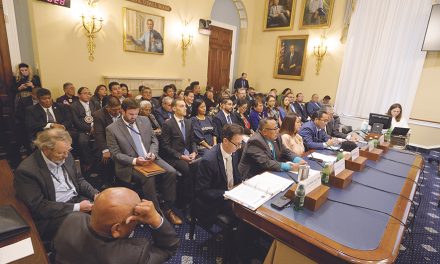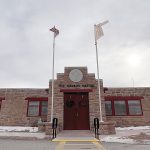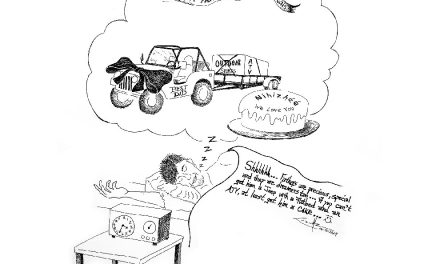
50 Years Ago: Trading posts face end of operations
The Indian Trader’s Association, made up of owners of trading posts on and near the Navajo Reservation, issued a report this week, which predicted that the trading post business on the reservation may be coming to an end.
The average trading post operator on the reservation has been seeing his income decrease over the past five years by as much as 50 percent as Navajo families have shifted their shopping preferences to supermarkets in Window Rock and in border communities, said the report.
Trading posts were still seeing good business on weekdays as families shopped at their local stores for items they needed immediately but even here the forecast was gloomy because of the rise of gas station convenience stores which have been on the increase during the past five years.
The end of an era comes just a few years after the 100th anniversary of the first trading post to open up to serve the needs of the Navajo people. That post opened up in 1866 at Fort Sumner to provide goods for Navajos who were incarcerated at Bosque Redondo.
When the Navajo people were allowed to return to their homelands in 1868, dozens of trading posts were opened up during the next two decades in all parts of the reservation, serving communities both big and small. Probably the most well known trader of that era was John Lorenzo Hubbell who set up a trading post in Ganado. He once described his role in the Ganado community as “everything from merchant to father confessor, justice of the peace, judge, jury, court of appeals, chief medicine man and de facto czar over the domain which he presides.”
He opened his trading post in 1876 and it still exists, having been taken over by the National Park Service as a tourist attraction to show how an old-fashioned trading post operated. You can still buy everything from basic supplies to finely woven Navajo rugs there.
It may be hard for people to believe but the trading post from 1870 to about 1950 competed with the chapter house for being recognized as the center of community life.
On weekends, dozens of Navajo families from nearby chapters would arrive in the morning and stay all day as the women did their shopping and men congregated on benches visiting friends. Often bootleggers would set up shop discreetly a couple of hundred feet from the trading post offering items not available there.
Many trading posts also had separate buildings with small rooms that the trader rented out to families who lived a long distance from the trading post and wanted lodging so they could start early the next morning to return home. The trading post also served as the post office for the community and traders became accustomed to being asked by elders to read letters that came to them from children who had moved off the reservation or were serving in the military.
Hubbell said one of the services he reluctantly performed for Navajos living nearby was that of undertaker. He said he would on occasion be traveling back to his trading post and find a dead body wrapped in a sheet or blanket alongside the road, placed there by Navajo families who adhered to tribal taboos about having nothing to do with death.
Hubbell said it would be his responsibility then to make arrangements for the loved one to be buried.
The report issued this week by the trader’s association said things began changing rapidly for traders at the end of World War II. Hundreds of Navajos came back to the reservation and instead of going into farming or ranching as their ancestors did, they began looking for jobs and business opportunities. Since job opportunities were scarce, many looked at the trading post business as a way to earn a living.
This came, according to the report, at about the same time that the Navajo people took a long and sometimes harsh look at the relationship been the trader and his customers.
While many, especially those who took over a family business, were honest and cared for the people they were providing services for, there was another group that saw the trading posts as a way to make a good financial living and were accused of taking advantage of their customers.
The late 40s and early 50s saw most of the trading post leases come up for renewal and one of the requirements needed to renew was an approval from the chapters.
For the first time in the tribe’s history, some trading post operators found themselves having problems getting that approval. A movement began to have Anglo trading post operators sell their operations to Navajos who were now trying to start a business.
And while most operators would probably be agreeable, there was a serious problem – no one wanted to pay the trading post operator what he thought the business was worth. The operator had spent tens of thousands if dollars building the trading post and making improvements. But under the Navajo system, he would only be able to get a fraction of that back since the land on which he built on trust land.
Once he lost the lease, everything he had built that he could not move technically belonged to the chapter. If he could have found someone rich enough to afford paying for the building and improvements, he would come out of the venture with a fair amount of money.
What the report didn’t say was that during those years, a remarkably high number of trading posts burned down as operators tried to get their investments back in that way. The report pointed out that at the end of World War II, there were more than 100 trading posts on the reservation. In 1970, there were about 35 and the report predicted that most of them would not be around in 1980.









 Highway 264,
Highway 264, I-40, WB @ Winslow
I-40, WB @ Winslow